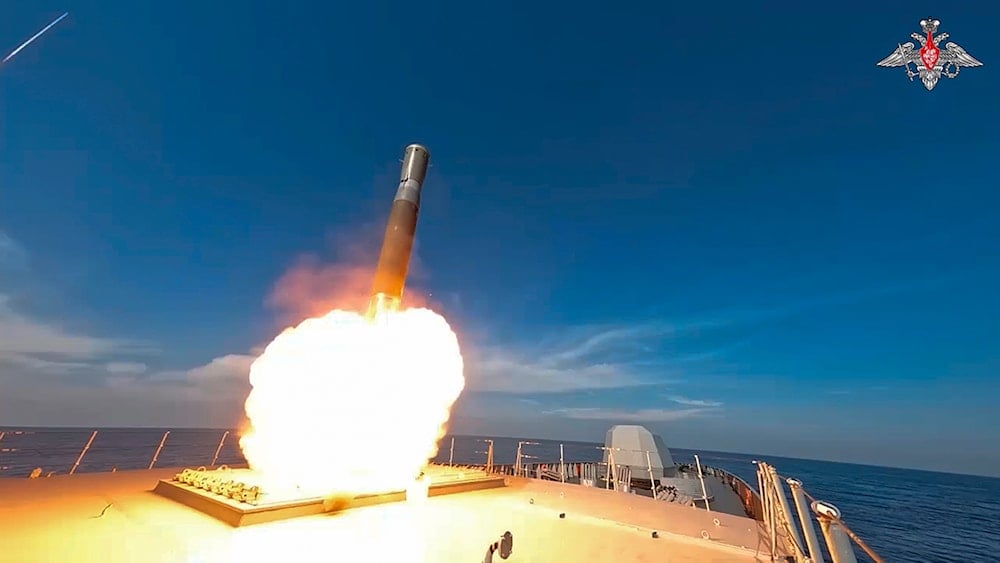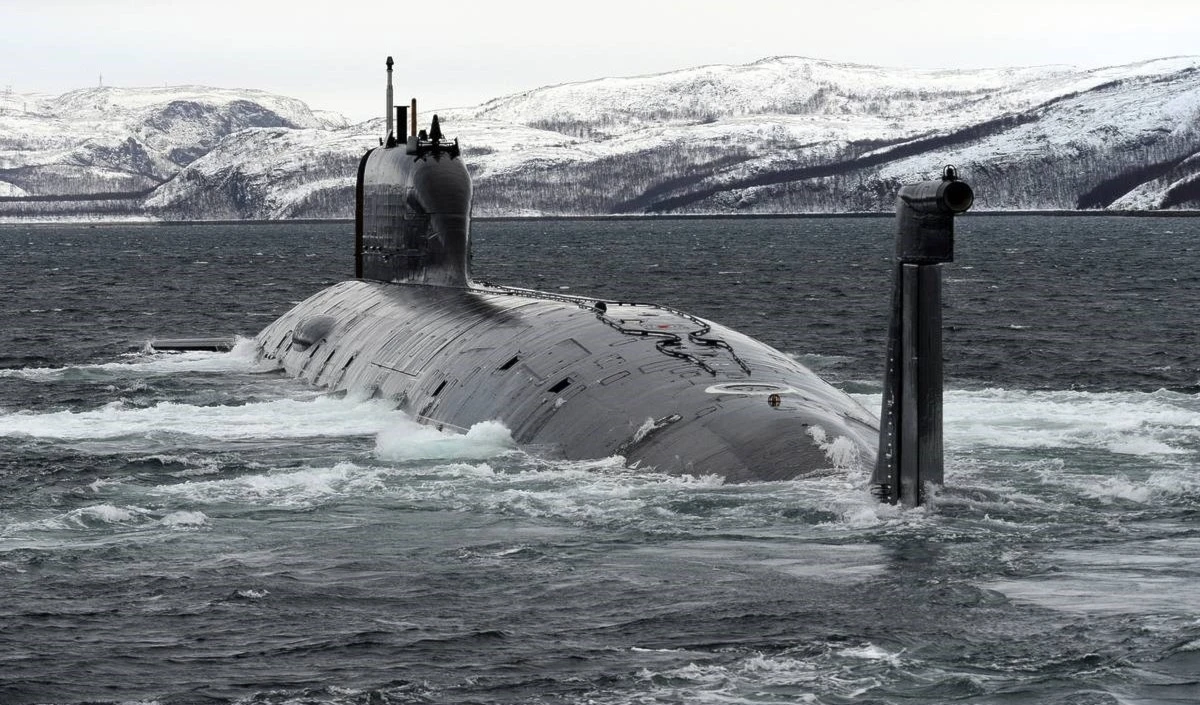Russia boasts military might with Zircon hypersonic missiles, bombers
Russia and Belarus conduct joint military exercises, with Moscow boasting its most advanced hypersonic missile technology, including its Zircon hypersonic cruise missile.
-

In this photo taken from video released by the Russian Defense Ministry Press Service on Tuesday, Dec. 3, 2024, a Russian navy frigate launches a Zircon hypersonic cruise missile during drills in the Mediterranean Sea (AP)
Russia announced it successfully fired a Zircon hypersonic cruise missile at a target in the Barents Sea and that Sukhoi Su-34 supersonic fighter-bombers had carried out strikes, all part of joint military exercises with Belarus, on Sunday.
According to the Defense Ministry, Russia's Zapad, or West, joint strategic exercise with Belarus, began on Sept. 12 and aims to improve military command and coordination in the event of an attack on either Russia or Belarus.
🚨🇷🇺Russian MiG-31 jets launched Kinzhal hypersonic missiles during the Zapad-2025 drills, striking critical targets of a mock enemy. pic.twitter.com/iGTdwBp1wr
— Sputnik (@SputnikInt) September 13, 2025
While Moscow and Minsk have stated the exercises are exclusively defensive and that they do not intend to attack any NATO member, the US-led military alliance announced an "Eastern Sentry" operation following the alleged Russian drone incursion into Poland on September 9-10.
🚨🇷🇺 ZAPAD-2025: RUSSIA’S LONG-RANGE BOMBERS RAIN DOWN FIRE
— Sputnik (@SputnikInt) September 13, 2025
Tu-22M3 bombers hit key mock enemy targets during Zapad-2025 strategic drills, says Russia’s Ministry of Defense. pic.twitter.com/rMrcmwFCkO
Russia's Defense Ministry released footage of the Northern Fleet's Admiral Golovko frigate firing a Zircon hypersonic missile at a target in the Barents Sea, showing the missile being launched vertically from the frigate and then powering off at an angle into the horizon. "According to objective monitoring data received in real time, the target was destroyed by a direct hit," the Ministry stated.
Russian President Vladimir Putin said in 2019 that the Zircon can fly at nine times the speed of sound and hit targets at sea and on land at a range of more than 1,000 km (600 miles). According to Russian media sources, the missile, known as the 3M22 Zircon in Russia and the SS-N-33 by NATO, has a range of 400 km to 1,000 km, and its warhead mass is around 300-400 kg.
Having invested heavily in its hypersonic missile arsenal, Russia has focused on key projects including the Avangard glide vehicle and the Zircon cruise missile, which have both been declared operational, while also deploying the Kinzhal, a missile derived from older ballistic technology but marketed as hypersonic, according to Foreign Policy's Sam Skove.
Meanwhile, the United States remains behind in hypersonic missile deployment, though it is working to close the gap, with its army’s Dark Eagle program having faced repeated delays but still being expected to be fielded soon.
The Air Force’s two major projects, the Air-Launched Rapid Response Weapon (ARRW) and the Hypersonic Attack Cruise Missile (HACM), are still years away from deployment, with the ARRW scheduled for production by 2026 and the HACM by 2027, according to US budget documents.

 3 Min Read
3 Min Read









